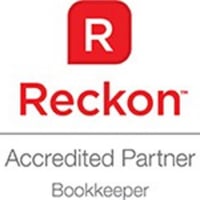Markup Account and Amount Displaying on Customer Invoices
I can't seem to work out how to add our mark up on expenses incurred by us, that we pass onto customers (default 10%), without it showing as a separate charge.
As reasonable as our customers are; they don't appreciate our mark up being made quite so obvious to them.
We charge on an hourly rate for trade services however have begun marking up materials / consumables used on jobs.
When creating an invoice and adding billable time / expenses , I want our markup added to the total of each expense (rather than showing what we purchased for, and how much we are making on each expense).
I am sure this is possible - I just can't see where to change my preference on this.
The help menu shows as below
An example is below
Hope I have been clear and there is a simple solution.
Cheers.
Answers
-
Hi Fiona
Hmm ... Your screenshot above looks like these are Items your business sells rather than reimbursable expenses ?
Reimbursable Expenses are normally incidental, one-off costs that you have incurred specifically for a customer that you are on-charging - eg Parking for attending on-site etc - NOT your goods & services that you sell.
Your goods & services that you actually SELL would usually be set up as Inventory Items (if tracking stock quantities), Non-Inventory Items (if not tracking stock quantities), Services or Other Charges. Your markup column on these Item types can normally be displayed on screen (for you) but not on the printed/emailed invoice your customer receives.
0 -
Hi Shaz,
Thanks so much for taking the time to reply.
To be a little clearer about how we operate.
We are a small fabrication company and do a wide variety of jobs. (Steel work jobs in the city to contracting to exploration drillers remotely, to building agricultural machines).
As such, we do not carry any inventory - jobs tend to be one off and require us to purchase different materials and consumables for each job.
Our charging structure is based on an hourly rate (service item). We then on-charge for any materials or consumables that were used to complete the job.
When we make a purchase related to a particular job, I record the transaction in "enter bill" or "write a cheque" and use the expenses tab. I select the correct expense account from (Materials / Fuel and Oil / Parts & Accessories etc). I then mark the items that we need to on-charge as 'billable' and choose the customer and job.
As the purchases we make for any particular job is always changing, and we do not keep stock (buy specifically for each job) - Are they reimbursable expenses or non-inventory items? These are not items we sell, they really are just expenses associated with a job.
This is an example of a typical invoice.
Looking forward to your comments.
0 -
Hi Fiona
Thanks for the detail.
Personally, if not wanting to track, I would probably create generic Items for FUEL (Other Charge-type) & MATERIALS (Either Other Charge-type or Non-Inventory) & use these as this allows for better/more relevant reporting.
eg You would set up FUEL like this with the crucial part being to tick the checkbox:
Note the use of the applicable EXPENSE tax code & account on the purchase side (the same ones you would normally select when you enter the expense) v the applicable INCOME tax code & account on the sale side. Also, by leaving the Descriptions blank, these will prefill on the invoice as per your Bill/Chq Description)
You would still enter the same as you do now, but instead of the Accounts tab, you would use the Items tab instead (You can still edit the specific Description accordingly):
This allows you to use the same ITEM on both costs (eg your Cheques/Bills) & your on-charge (eg Customer Inv):
You can still update the Rate to whatever you want to on-charge it at:
The program still automatically recognises the difference between what you paid & what you've on-charged:
... but you now have greater reporting capacity (around Items, in addition to what you already had)
Hope that helps 😊
0









